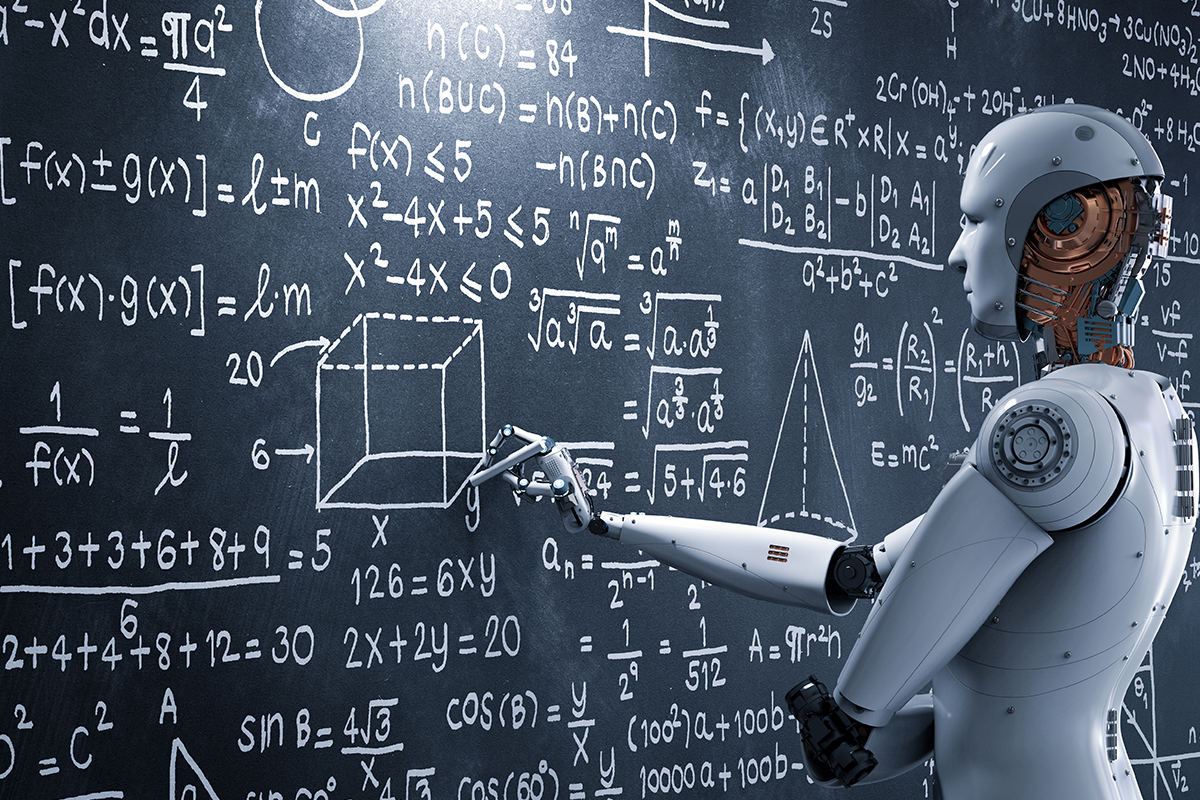“Hey Siri, what role does artificial intelligence play in the Learning and Development process?”
 Machine learning with Artificial Intelligence (AI) is able to provide options of answers to this question. AI’s ability to make machines processing information and perform human-like actions, display a significant transformation of communication and action. From virtual assistants, chat bots to personalized content. Today’s AI is transforming learning and development strategies faster and smarter.
Machine learning with Artificial Intelligence (AI) is able to provide options of answers to this question. AI’s ability to make machines processing information and perform human-like actions, display a significant transformation of communication and action. From virtual assistants, chat bots to personalized content. Today’s AI is transforming learning and development strategies faster and smarter.
Apple’s built-in Siri takes advantage of Artificial Intelligence to provide voice-to-text-recognition, natural language and big data processing. This form of AI has become one of the main learning engines of data processing and it also transforms learning strategies in various aspects.
This form of AI is similar to the other favorites such as Google’s “OK Google”, and Amazon’s “Hey Alexa” command. Aside from regular voice commands, these AI virtual assistants are able to assist voice interaction, play music, set alarms, observe traffic and display weather, by providing real-time information.
With the technology of AI, voice assistants are even more human-like by surprisingly being able to deliver dry jokes through the “Tell me a joke” command. It’ll either makes you cringe and smile or sitting there flabbergasted with lifted eyebrows.
Users are taking AI virtual assistance seriously in daily activities, even when it comes to driving safety. The 2019 In-Car Voice Assistant Consumer Adoption Report reports 77 million adults in the U.S use an AI Voice Assistant in their car. This displays how essential AI virtual assistants have become for users in their daily activities, even when it comes to real-time commuting.
The existence of AI has changed the way daily activities and learning behaviors are processed, slightly more dependent on machines to lend a hand at activities in a more effective and certainly advanced way.
Artificial Intelligence Transforming Learning Behavior
In Learning and Development, AI is transforming learning behaviors from conventional to technological approaches. In corporate L&D, learning services are constantly transforming from customer service email and hotlines, to real-time AI generated bots.
Gartner forecasts that 85% of customer service interactions in 2020 will be powered by AI bots. This increasing number defines how AI successfully interacts with learners and aligns to customers.
Let’s name your favorite e-commerce travel platform. You are planning a holiday and you browse through the platform to look for suitable accommodation. A platform equipped with machine learning through AI will revamp its customer service section to a chat box or chat bot available any time of the day. You will see it available and accessible for website visitors to send in inquiries, with a chatbot replying.
As for AI machine learning based content, as soon as you put in the date and destination, all the hotel options popping up are based on filters. By the time you’ve browsed through one or two options, the platform will provide personalized hotel suggestions based on the machine learning of your browsing history. This is where AI maximizes your personalized experience by providing options similar to what you are searching for. Either that could be the city of your destination, the price range, or even the pictures you previously browsed.
This form of machine learning plays its role in marketing and retargeting the products or services already browsed previously. Remember the email reminder you received after forgetting to check out your order? Or the ad displaying that outfit you wanted to purchase, which keeps on appearing on the pages you visit even if they don’t relate at all.
That’s what AI can provide to support a targeted experience.
AI Changing the Future of L&D in Corporate Learning, Skill and Development
In corporate L&D, AI has the potential to amplify technology, making data-driven analysis and faster decisions. AI enables the L&D process to work smarter, faster and achieve better outcomes.
In skill and development approaches, AI enables filters via machines to minimize the complicated process of data. For example a skill development program entitled for each employee. AI can filter employees preferences throughout machines to provide personalized skill and development options. Directly and straightforward.
For recruiters AI can simplify the recruitment process through selective filtering, managing candidate´s criterias, expected salary, experience and background, before proceeding to shortlisted candidates. This creates a more efficient process for recruiters and enables specific requirements to be detected through machine learning AI.
By having machine learning AI, learners are also able to maximize their personal learning process by arranging their own preferences based on the skill and experience. Therefore, this leads to a healthy skill development in a corporate L&D process.
Personalizing the AI Experience
A personalized AI experience resembles the successful journey of Netflix with AI. The Netflix Recommender System: Algorithms, Business Value and Innovation published in ACM Transactions on Management Information Systems describe how AI relates significantly to customer’s habits.
Numbers state that 80% of videos that customers watch are a result of Netflix recommendations. Meanwhile only 20% of watches are based on the search tool.
The role of AI in Netflix’ case relies on personalized machine learning suggestions to provide personalized options for users, based on their last watched program, most watched category, watch time and so forth. This detects a pattern of learning behavior from navigating and typing through the search toolbar, to simply swiping and scrolling to find recommended options provided on the front page as easy as that.
Despite the satisfying numbers, personalizing the AI experience definitely comes with pros and cons. The good side, with AI, learning programs can be adaptive to each individual, suiting their needs and fulfilling their preferences, at the same time providing services limited to human-operated features.
But then on the other side. How safe is it?
AI comes with data, privacy and security issues which are not yet considered 100% safe to operate independently in a learning system. This becomes one of the obstacles of AI to dominate the corporate learning process. Risks of stolen data, privacy barriers and unsupported technology makes it a double edged sword.
Despite all odds, a great AI experience requires the role of technology, it requires a machine learning process that develops by time. Without it, AI would fail to enhance the ultimate learning experience.
To imagine a life without AI today would be surely difficult, knowing that AI has transformed learning processes in ways unimaginable.
Sources:
- Banerjee, Gabriel. 2019. How Artificial Intelligence Can Help Learning and Development. Retrieved from: https://trainingindustry.com/blog/learning-technologies/how-artificial-intelligence-can-help-learning-and-development/
- Barnard, Dom. 2019. Examples of How AI is Transforming Learning and Development. Retrieved from: https://virtualspeech.com/blog/ai-ml-learning-development
- Basumallick, Chiradeep. 20018. 3 Incredible Ways AI Will Transform Learning and Development. Retrieved from: https://www.hrtechnologist.com/articles/learning-development/3-ways-ai-will-transform-learning-and-development/
- Gomez-Uribe, Carlos A. 2015. The Netflix Recommender SystemL Algorithms, Business Value and Innovation: ACM Transactions on Management Informations Systems. Retrieved from: https://dl.acm.org/doi/10.1145/2843948
- Mauri, Jacopo. 2019. The Importance of AI in Learning and Development. Retrieved from: https://elearningindustry.com/the-importance-of-ai-in-learning-and-development





